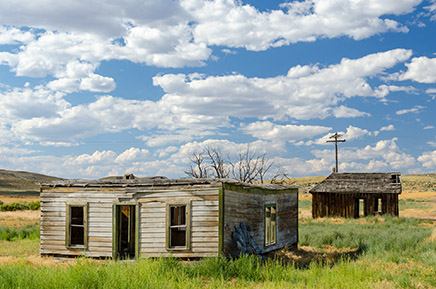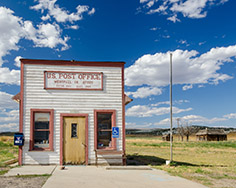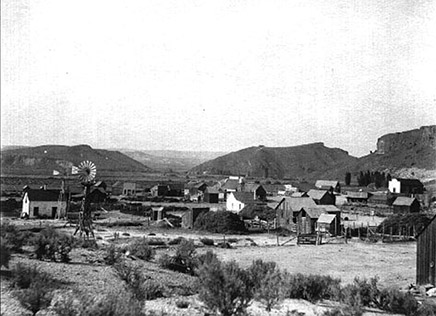CONTINUED FROM THE PRINT EDITION:
After being fired, ex-town marshal wanted revenge
Carey then proceeded to hold basically the entire town at bay with a pistol that, later on, would be revealed to be empty. But, finally Ben Corbett — remember him? — tracked him down and pleaded with him to give himself up. Carey refused to do so. But he added — according to the Malheur Enterprise’s report — that “if he was a friend, then he could get him some cartridges, and handed him a dollar.” Corbett said, “Follow me,” and walked into Jones’s general store, headed for the ammunition counter. In the process of the purchase, the still-rather-drunk Carey let his guard down, and Corbett leaped upon him and pinned him to the counter. Other townspeople rushed to help, and Carey was thus taken into custody. When they took his gun, they found it completely empty. His last round had been the one that killed Marshal Westfall; he’d been bluffing the whole time.
THE RESIDENTS OF Westfall were very worried about their prisoner. First, the chance of a lynch mob forming and taking justice into their own hands (and thus adding yet another “black and grained spot” to leave its tinct on Westfall’s reputation). This did not turn out to be a problem. The other worry was that he would figure out a way to get the shackles off and escape from custody. Carey was a blacksmith by trade, so he had a pretty good understanding of what can and cannot be done with metal. This would turn out to be a problem, although not until Carey was safely out of Westfall and in durance at the county seat in Vale; and more on that in a bit. In custody, Carey was defiant. He told reporters his only regret was that he hadn’t murdered Mayor West while he was about it. In addition to various reporters, Carey was visited in the city joint by the director of the Westfall brass band, Charles Tapp. “According to Mr. Tapp, Carey was a member of the band all last winter and spent a good deal of time practicing on his horn,” the Enterprise reported. “It is said that Carey’s wife was overjoyed over the interest that Carey took in the band as he seemed to keep away from the saloons and out of trouble. Just before the terrible tragedy Carey had received a new horn and his wife was more than pleased at the interest he had manifested in the band as it seemed to make him a better man. But the marshalship trouble came up and his worst nature was aroused, resulting in the awful deed for which Carey must now answer.” Marshal Westfall’s funeral was held on Sunday, two days after the murder, and town undertaker T.T. Nelson said it was the biggest funeral in the town’s history.
|

“Since Carey was lodged in the jail, officers have taken every precaution,” the Oregon Daily Journal’s Vale correspondent wrote, “having been warned that he would make a get-away if given a chance. It is supposed his friends assisted him, but how Carey secured the steel saws is a mystery, as every suspicious character around the jail has been watched. ... As he is a blacksmith and an expert machinist it would have been easy for him to cut his way out of the cell.” Eventually, the murderer made his way into court, and the courtroom was packed. The cop-vs.-cop nature of the shootout, and the Wild West setting, made for some highly dramatic newspaper stories, and public interest was strong. In the end, Carey was convicted of second-degree murder and sent off to serve a life stretch. According to the newspaper reports, he would be eligible for parole in 15 years with good behavior, so he probably was out in time to go back and see his old town before it faded away and crumbled into the high desert it had sprung out of. Today Westfall is basically a ghost town, although it does have a post office that serves nearby ranches. As with so many colorful little towns in Malheur and Harney counties, the high-desert homesteaders whose trade supported it eventually gave up and sold their land off to stock ranchers, leaving the landscape peppered with empty buildings and dusty memories.
|



